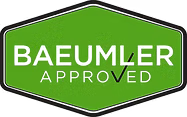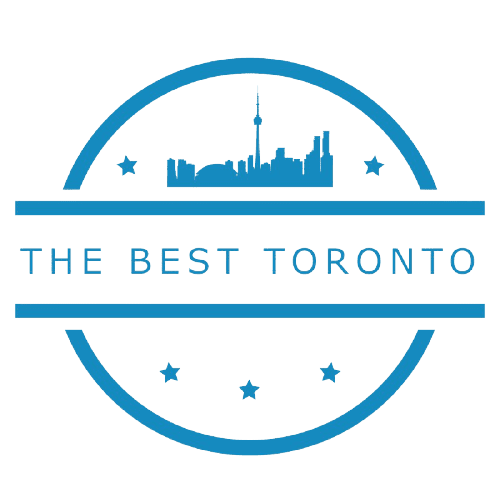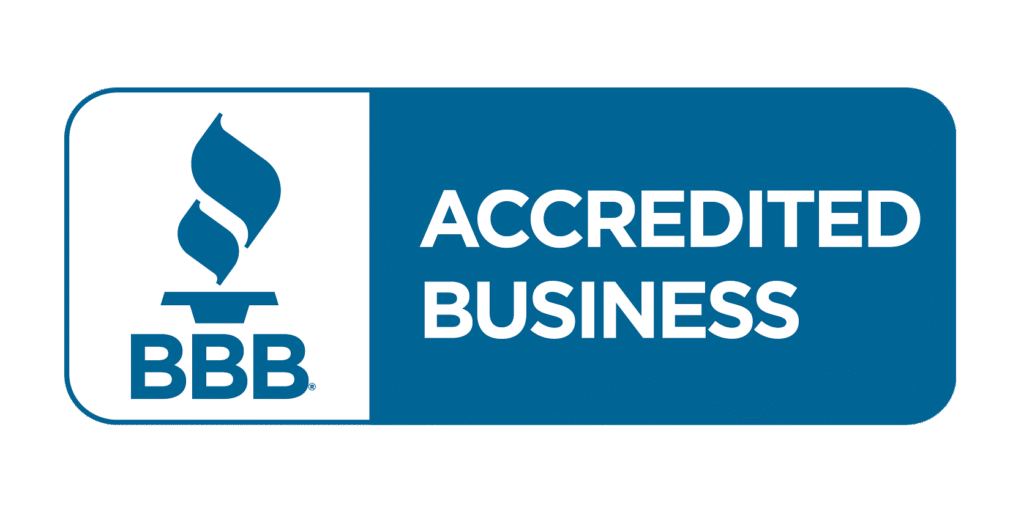Mold Inspection Toronto
Mold Inspection & Testing Services Toronto
Recent mold testing data from Toronto shows a concerning trend. 17% of Canadian homes have mold problems. Rental properties have even higher rates.
This situation creates real concerns, especially when you think about the health risks involved. People who breathe in mold spores for long periods often develop respiratory problems, allergies, and sinus issues. The risks become more severe as exposure continues, potentially leading to asthma, bronchitis, and immune system problems.
The biggest problem lies in Ontario’s mold inspection industry, which lacks regulation. Unlike licensed professionals such as electricians or gas fitters, mold inspectors don’t need certifications, tests, or government registration.
Homeowners face a tough challenge when they need to select a reliable mold company. A quality inspection protects your health, maintains property value, and prevents legal issues. High humidity levels create perfect conditions for mold growth, which makes regular property inspections vital.
This piece will help you find mold in your home. It will explain what professional mold inspection services in Toronto include. You will also learn the main factors that affect inspection costs.
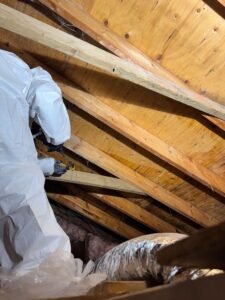
Contact Us Today
Homeowners Report Mold Issues in Toronto
Toronto homeowners now face a growing mold crisis. Many residents find this unwelcome intruder in their homes. The city’s mix of urban housing features and weather patterns creates perfect conditions for mold to thrive. So, mold inspection services in Toronto report more calls from worried homeowners throughout the Greater Toronto Area.
Why Mold is More Common in Urban Homes
Urban properties in Toronto offer perfect environments for mold to grow. Scientists have found more than 270 species of mold in Canadian homes. Toronto’s urban setup makes this problem even worse. The city’s mix of buildings—from century-old houses to modern high-rises—makes it hard to prevent mold.
Toronto’s aging houses pose the biggest problem. Most homes built in the mid-20th century used materials like wood and drywall that soak up moisture easily.
These older buildings don’t have modern ventilation systems. This traps humidity inside. As buildings get older, they develop weak spots where moisture gets stuck and mold starts growing.
High-density living in Toronto also makes mold problems worse. Mold can spread faster between units in apartment buildings and condos if left unchecked. Mold tends to grow in these places:
- Basements and cellars that are damp with poor air flow
- Bathrooms and kitchens where water use and poor ventilation create moisture
- Attics with roof leaks and bad insulation
- Areas near windows and doors where water seeps into walls
The foundations of older Toronto homes often crack or wear down over time. This lets moisture seep in. These homes don’t have today’s better waterproofing methods, which makes them easy targets for mold.
How Toronto’s climate contributes to mold growth
Toronto’s unique weather creates ideal conditions for mold growth. The city’s dramatic seasonal changes affect indoor moisture levels. These weather patterns make Toronto’s homes more likely to develop mold than homes in places with steadier weather.
Summer brings high humidity that keeps moisture from drying up inside homes. Lake Ontario sits nearby and adds to the humidity that affects indoor air quality. Warm temperatures mixed with constant humidity give mold spores the perfect environment to grow.
Winter creates different but equally tough conditions. Melting snow and ice add moisture to basements and other weak spots. The constant freezing and thawing makes foundation cracks bigger, letting more water get inside.
People keep their houses sealed tight in winter to stay warm. This traps moisture inside. Poor ventilation lets mold grow and spread.
Key weather factors that help mold grow in Toronto include:
- Humid summers and wet spring and fall seasons
- Significant temperature fluctuations that cause condensation, especially in poorly insulated areas.
- Lots of rain and storms that increase dampness
- Extreme weather throughout the year
How to Check for Mold Before Calling Professionals
You can save thousands in cleanup costs by catching mold problems early. A quick look around your house helps you decide if you need professional mold inspection services in Toronto.
Visual signs: stains, warping, and musty smells
Mold leaves behind clear signs that help you spot it. You’ll see fuzzy, cotton-like, or slimy patches in black, white, gray, green, or brown colors. Several warning signs point to hidden mold even when you can’t see it:
- Look for yellow, brown, or black patches on your walls, ceilings, or floors.
- These colors may indicate moisture issues.
- You might also have mold.
- Surface changes: Excess moisture behind surfaces leads to bubbling paint, peeling wallpaper, warped walls, or cracking plaster
- Persistent odours: A musty, earthy, or sour smell remains one of the best ways for mold detection Toronto, even if you can’t see it
Visible mold needs quick action. Here’s a quick test: put a drop of bleach on what you think is mold. The spot will lighten within minutes if it’s mold, while dirt or stains stay the same.
Common Spots for Mold: Basements, bathrooms, and attics
Mold runs on three things: food sources (organic materials), stable temperatures, and moisture. Some areas in Toronto homes attract mold more than others:
Basements top the list of mold-prone spaces. Poor ventilation, cool temperatures, and moisture from leaks or flood damage make them perfect breeding grounds. Mold often starts near foundation cracks in basement walls.
Bathrooms create ideal conditions through regular water use, shower steam, and poor ventilation. Look around tubs, showers, sinks, and behind toilets often.
Attics develop mold from roof leaks, poor insulation, ice damming, or bad ventilation. Warm air rises and gets trapped, creating moisture problems in these spaces.
Watch these spots too:
- Window and doorframe areas where water collects
- Areas under sinks and near plumbing
- Laundry rooms, especially behind washers
- Cold cellars and crawl spaces
- Inside and behind furniture against exterior walls
When DIY testing kits fall short
DIY mold test kits might seem budget-friendly, but they have significant limitations. These kits check surface mold but miss hidden problems.
DIY kits cannot detect mold that grows behind walls, under carpets, or in HVAC systems. These are common hiding spots in Toronto homes. Professional tools like infrared cameras, moisture meters, air quality samplers, and borescopes find what these kits miss.
Home kits have accuracy problems. They might show high mold counts when levels are low, or miss dangerous mold spores that professionals can spot through specialized testing.
Your own quick check helps spot obvious signs, but professional mold testing services in Toronto give you the full picture. This becomes crucial when health issues pop up or mold keeps coming back after cleanup attempts.
What Happens During a Professional Mold Inspection Toronto
Certified mold inspectors Toronto take a step-by-step approach to find visible and hidden contamination in Toronto homes. Certified inspectors get a full picture of mold problems using specialized equipment, something DIY methods can’t match.
Step-by-step breakdown of the inspection process
Toronto’s mold inspection services start with questions about the home’s history. They ask about water damage, renovations, and any health issues. The inspector then does a detailed visual check for discolouration, warping, water stains, and other signs of mold in house Toronto.
The next phase measures indoor air quality factors like temperature, relative humidity, and dew points. Unusual readings in rooms point to hidden issues. The inspector collects mold spores through special vacuum filters and sends these samples to certified labs for testing.
The inspector’s final report includes:
- Identified mold species and concentrations
- Sources of moisture that feed growth
- Recommended remediation strategies
- Prevention measures
Tools used: moisture meters, thermal cameras, borescopes
Inspectors use advanced equipment to spot mold more accurately:
Moisture meters find abnormal moisture levels in materials without causing damage. These devices spot dampness inside walls, floors, and ceilings before visible mold appears.
Thermal imaging cameras have changed how we find mold by showing temperature differences that reveal hidden moisture. These cameras find differences in surface temperatures. This helps inspectors spot hidden moisture problems that we cannot see. These issues often mean there is mold growing underneath.
Borescopes let inspectors check hard-to-reach areas without property damage. These flexible optical devices can look into wall cavities, ventilation systems, and tight spaces to confirm mold growth.
Other common tools include:
- Hygrometers to measure ambient humidity levels
- How to detect mold in your home Toronto? Particle counters to detect airborne mold spores
- Laser particle counters to identify problematic particles
How inspectors identify hidden mold behind walls
Finding hidden mold is challenging, but inspectors tackle it with multiple tools. They start with thermal imaging to spot temperature differences that show moisture behind surfaces. Cold spots often reveal where water has seeped into structures.
Sometimes they need a closer look for solid proof. They might use borescopes through tiny holes to see mold growth behind walls. Air sampling near these spots helps verify by measuring mold spore levels.
How Much Does a Mold Inspection Cost in Toronto?
The price of professional mold inspection services in Toronto depends on several factors. Homeowners need to plan their budgets based on their property type and how detailed they want the inspection to be.
What’s included in the price?
Mold inspection packages come with several components. Restoration Mate’s simple mold inspection with a report costs CAD 348.34 and includes visual checks and written findings. Their complete mold testing service costs CAD 627.01 and covers sample collection and lab testing.
Simple mold testing ranges from CAD 348.34 to CAD 487.68, but prices go up to CAD 557.34-696.68 when labs analyze the samples. Each testing method has its price:
- Culture testing: CAD 69.67 to CAD 104.50
- Stain testing: CAD 209.00 to CAD 278.67
- HVAC system testing: CAD 69.67 to CAD 104.50
- Air quality testing: Up to CAD 975.35
Factors that increase mold testing cost
Your final mold inspection bill depends on several factors. Property size affects inspection time and sample numbers. Homes larger than 4,000 square feet might cost CAD 975.35 to CAD 1393.36, while smaller properties range from CAD 418.01 to CAD 557.34.
Hard-to-reach spots are another significant factor. Areas like crawl spaces, attics, or inside walls need special equipment and more time, which adds to the cost. The type of mold also affects the price. Testing for toxic varieties like toxic black mold needs specific, faster processes that cost more.
More things that affect mold inspection costs:
- Number of samples needed (more affected areas mean higher costs)
- Inspector’s experience (better-qualified pros charge more)
- Lab testing needs (detailed analysis costs more)
- Toronto neighbourhood (prices change by area)
Getting a full professional inspection makes sense when you think about health risks and what it might cost to fix undetected mold problems later.
What to do After the Inspection: Next Steps for Homeowners
Your mold inspection results demand quick action to protect your home and your family’s health. The way you understand the report and choose your next steps will make a significant difference in how well you manage the mold situation.
Understanding your inspection report
The mold inspection report needs careful review to spot key elements like mold types, contamination spread, and moisture sources. A thorough inspection report helps protect health, maintain home value, and prevent legal issues. Most reports show visual proof of problem areas, moisture measurements, and specific recommendations to fix issues.
Toronto health officials state that people can clean small mold patches (1 square meter or less) with household products. However, if the mold is moderate to extensive, you will need professional help.
When to hire a mold remediation contractor
You’ll need professional remediation in several specific cases. Mold patches bigger than three square meters need expert attention. Professional help becomes essential when:
- Mold comes back after cleaning, which suggests ongoing moisture problems
- Flood water contains contaminants like sewage or chemicals
- DIY cleaning attempts haven’t solved the problem
- You suspect hidden mold inside walls or above ceilings
- Water from floods has gotten into wall or ceiling spaces
Tips for choosing mold remediation companies in Toronto
Finding the right mold remediation specialists needs careful evaluation. Look for companies that:
- Have specific mold removal liability insurance
- Maintain IICRC certification (Institute of Inspection, Cleaning and Restoration Certification)
- Support third-party testing after cleanup
- Give detailed written cleanup plans
- Remove mold completely instead of covering it up
- Give written work guarantees
Acting Against Mold: Protecting Your Toronto Home
Mold is a major problem for Toronto homeowners. It affects about 17% of Canadian households, with even higher numbers among renters. This piece looks at the specific mold challenges Toronto residents face when they try to spot and remove mold.
Toronto’s unique climate and aging housing create the perfect breeding ground for mold. The lack of regulation in the mold inspection industry makes it tough to find qualified professionals.
Your best defence against serious mold damage is to catch it early. While you can spot obvious signs yourself, professional mold testing Toronto gives you a complete picture. They use specialized tools like moisture meters, thermal cameras, and air sampling methods.
The cost of professional inspections matters to most homeowners. Small to medium-sized properties cost between CAD 418.01 and CAD 557.34, while larger buildings cost more. Notwithstanding that, these fees are tiny compared to major cleanup costs or health problems from untreated mold.
Once you get your inspection results, you need to act fast. You might handle small spots with household cleaning, but bigger problems need professional help. Finding qualified remediation specialists with proper certification and insurance is vital for effective mold removal.
Note that mold problems don’t fix themselves. Property value and family health risks grow the longer mold stays. Fixing moisture sources stops future growth and saves you money and time down the road.
You ended up with the tools to protect your biggest investment. Regular inspections, quick fixes for water problems, and proper humidity control reduce mold risks by a lot. Mold creates real headaches for Toronto homeowners, but now you have what you need to spot, fix, and prevent mold problems effectively.
FAQs for Mold Inspections in Toronto
Q1. What is the average cost of a mold inspection in Toronto?
The cost of a mold inspection in Toronto typically ranges from CAD 418 to CAD 557 for small to medium-sized houses. Larger properties or more detailed inspections can cost up to CAD 1,393 or more. The price depends on factors like property size, accessibility, and the type of tests needed.
Q2. How can I identify potential mold growth in my home?
Look for visual signs such as discolouration, staining, or surface changes on walls, ceilings, or floors. Pay attention to persistent musty odors, which often indicate mold presence. Common hotspots for mold growth include basements, bathrooms, attics, and areas around windows and plumbing fixtures.
Q3. When should I hire a professional for mold inspection instead of using a DIY kit?
Experts recommend professional mold inspection when you suspect hidden mold, face recurring mold issues, or experience health concerns. Unlike DIY kits, professionals use special tools like thermal cameras and moisture meters. These tools help them find mold behind walls and in hard-to-reach places. This gives a more complete Toronto mold assessment.
Q4. What happens during a professional mold inspection?
A professional mold inspection typically involves a visual examination, moisture measurements, air quality testing, and possible sampling. Inspectors use tools like moisture meters, thermal cameras, and borescopes to identify both visible and hidden mold. They then provide a detailed report with findings and recommendations.
Q5. What should I do after receiving my mold inspection results?
After receiving your inspection report, carefully review the findings and recommendations. For small areas of mold (less than 1 square meter), you may be able to clean it yourself. However, for larger areas or if mold keeps returning, it’s advisable to hire a professional mold remediation contractor. Choose a company with proper certifications and insurance for mold removal.
How It
Works
Enter Details
Please provide as much information as possible about your emergency service and answer a few questions. Within minutes, we will be able to provide you with an expert. It’s easy and quick!
Book Assessment
Hire Us
24/7 Mold Inspection Toronto
Contact Us Today
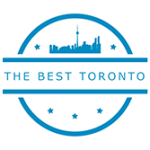
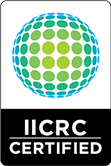
Frequently Asked Questions
We Partner With All Insurance Companies







Why Choose Us

Appointments
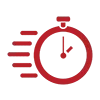
Fast Service

Experience

Certified Mold Removal & Remediation Company

Workmanship

Approved Pricing
Contact Us Now
What Our Clients Are Saying
Trustindex verifies that the original source of the review is Google. We consider ourselves fortunate to have happened upon CPR24 Restoration via a Google search when we were in need of remediation work for a mold issue in our basement. The glowing reviews prompted us to call and we quickly became aware of why this company has met with so much success. As soon as Chris arrived we could see his mind turn to problem-solving mode. He assessed our situation, outlined the work that needed to be done and most importantly provided reassurances that his team could get right on it. It gave us peace of mind to know that CPR24 could not only deal with the mold issue but also put everything back together and refresh all the areas involved. Not having to go in search of renovation contractors was particularly important to us as we had time constraints to get the work done. We were impressed by the efficiency of the trades and the respect shown to us and our home by all the workers involved. And it was nice to see some of the same faces throughout the project which provided continuity for us. It was evident that these individuals took pride in their work and were committed to a job well done. We thank CPR24 for its professionalism and timely service and certainly recommend it for your restoration needs.Trustindex verifies that the original source of the review is Google. I had a flood in my basement and I called right away to get help. The team was extremely professional and efficient. They were with me every step of the way, and answered all the questions that I had. This is by far one of the most professional companies I have ever had the pleasure of dealing with. I would recommend them to everyone that I know because they really care about their work and they treat the customer with the upmost importance and respectTrustindex verifies that the original source of the review is Google. Outstanding service from CPR Restoration! They were fast, professional, and took care of everything with great attention to detail. Highly recommend for any restoration needs.Trustindex verifies that the original source of the review is Google. Recently found mold in my attic, called CPR24 Restoration after finding them on the first page of Google. They picked up the phone straight away and gave me a whole detailed rundown on the steps that would need to be taken in my attic. They were very professional and efficient throughout the entire process. Overall excellent mold removal and remediation company with quick and professional service. Beyond satisfied with the results! Will be recommending to my friends&family.Trustindex verifies that the original source of the review is Google. I called CPR24 Restoration after a condo water leak I recently experienced. After searching flood companies on Google and countless calls with other companies, CPR24 Restoration was the one that stood out to me most and was honestly most helpful throughout the entire process. Chris was quick to answer the phone, and they were the only company that gave me a clear outline of the water damage and flooding process. He met with me the same day of my phone call and was always very punctual. The team was very patient with me, they helped answer all of my many questions and were always very quick to respond if I had any issues throughout the week. I really appreciated how supportive Chris and his team were throughout the entire process. Highly recommend CPR24 Restoration!Trustindex verifies that the original source of the review is Google. I had an amazing experience with CPR24 Restoration. I had mold in my basement and they were very quick and easy. Great customer service, Highly recommend.Trustindex verifies that the original source of the review is Google. My sister recommended CPR24 Restoration for flood damage and mold removal. I started to smell mold in my basement last week, I called Chris and he was there within the hour. I am so relieved I called him when I did because there were signs of toxic black mold which their team removed very efficiently. Staff was friendly and very punctual. Overall 10/10 experience!Trustindex verifies that the original source of the review is Google. Recently I had mold problem in my basement Chris from CPR Restoration came with his professional team and took care of the situation I recommended them to all my friends great company to callTrustindex verifies that the original source of the review is Google. I want to share my wonderful experience with CPR24 Restoration whom I highly recommend to others looking for mold removal companies. I called CPR24 Restoration for the toxic black mold I had in my basement, after finding them on Google. They were always on time, responded quick to my emails, and made me feel very secure throughout the whole process. Their team was very efficient but extremely careful at the same time. So professional and will definitely be keeping their contact for the future.Trustindex verifies that the original source of the review is Google. I was so stressed out though, but Chris and his team are well organised, skilled, well mannered and very friendly. Anytime I called him, he replied. His main focus on client’s satisfaction. He is a very sincere person. Thanks very much to CPR24.





